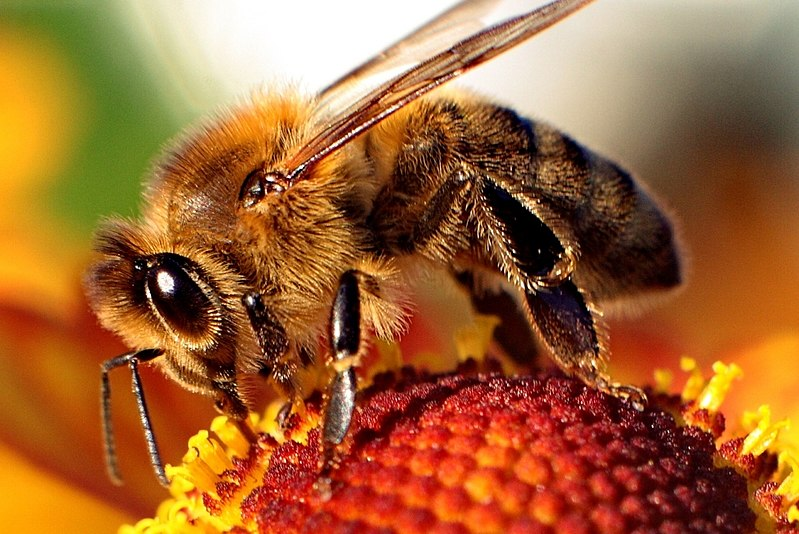But what has Valentine's Day got to do with bees?
The story goes like this:
One day Cupid came across a hive oozing with honey, and the greedy boy lost no time in scooping out a handful to eat.
But the bees, alerted to the honey-thief, rose up in a swarm and began to sting Cupid, so that he ran away (or perhaps he flew) to his mother the goddess Venus, crying both with pain, and with outrage that such little creatures could cause such agony.
But Venus told the little boy that perhaps it was a good thing that he should know what it was like to be caused such distress and anguish with a sting.
watercolour by Walter Crane
Spring is just beginning here in England, and the first bumblebees are buzzing round the winter honeysuckle that grows by my front door.
There are over 16 000 known species of bees, and the vast majority of them live solitary lives, but it's the honey bees that attract the most attention.
Apart from being furry and dangerous, honey bees are important for pollinating vast numbers of flowers, some of them important food crops. But the sweat bees, for instance, don't have so many fans; and some stingless bees, the smallest of which come in at under 2 mm in length, are seldom noticed.
Flowers provide bees with both nectar and pollen. The first gives them energy, and the second is chiefly used as baby food.
Where can you find a bee? Anywhere where there are flowers. That's everywhere except Antarctica and very watery places.
a mason bee, which nests in dead wood. Photo by Beatriz Moisset
Once you've spotted one, listen and see if you can hear it, too.
Spot the Frippet: a bee. This word is bīo in Old English.




No comments:
Post a Comment
All comments are very welcome, but please make them suitable for The Word Den's family audience.